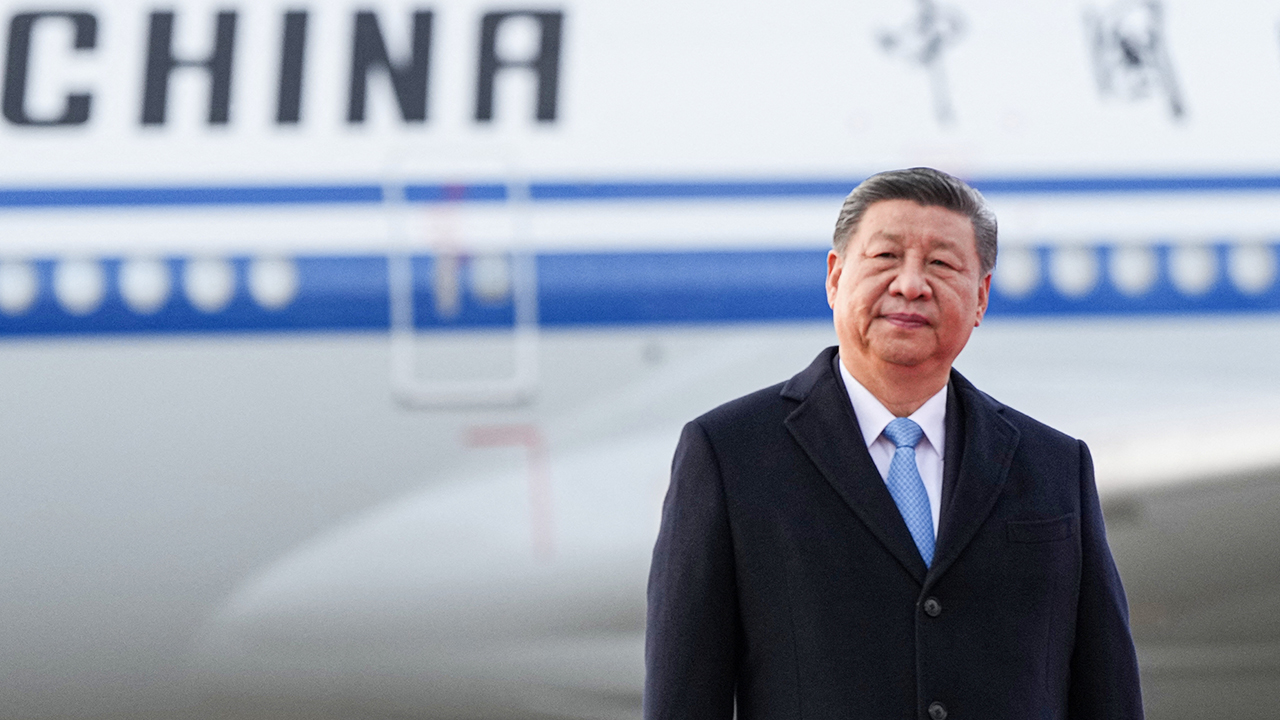The U.S. is the global leader in artificial intelligence, but a new report shows China is rapidly expanding its development.
“China is moving incredibly quickly and could absolutely catch up if the United States falls off its game,” said Gregory Allen, senior advisor with the Wadhwani AI center at the Center for Strategic and International Studies.
According to Stanford’s AI index report, the U.S. had 40 notable AI models in 2024, China had 15 and Europe had 3. While the U.S. is far ahead in quantity, its advantage in quality has been closing quickly.
OPINION: AMERICA MUST WIN THE AI RACE — AND PREPARE FOR THE WORST
“I think that winning the AI race means that the U.S. will continue to be the dominant power in the world in the 21st century,” White House AI and Crypto Czar David Sacks said. “It’s true that since the launch of DeepSeek, I think we’re only maybe three to six months ahead of China at the AI model layer.”
Sacks says the AI model layer is just the surface of a larger stack of competition, but China is showing the most improvement in that layer. Models are frequently assessed in various tests, including languages, math problems, general reasoning and coding. All platforms have improved in recent years, with jumps of 18.8% in general reasoning (MMMU) and 48.9% in PhD level science (GPQA). Coding accuracy (SWE-Bench) jumped from 4.4% in 2023 to 71.7% in 2024.
“AI is very, very good at learning how to be good at any given test,” Allen said. “The same challenge that you have in college entrance examinations—are you measuring how capable a student is in their overall intellectual potential? Are you measuring how good they are at studying for standardized testing? There’s a similar version of that phenomenon when it comes to AI.”
Experts expressed concern about how quickly Chinese models have improved in recent years. At the end of 2023, U.S. models performed better 17.5% of the time in language understanding tests (MMLU). Chinese systems narrowed that gap to 0.3% in 2024. In General Reasoning testing (MMMU), the U.S.’s 13.5% advantage fell to 8.1% in the same period. In a more advanced language test (MMLU-Pro), Chinese Platform DeepSeek-R1 posted a higher score than any American-made model.
“When it comes to where the U.S. stacks up in global competition, I think the far more relevant figure is in global adoption of the technology,” Allen said.
CHINA EXPERIMENTING WITH BRAIN-COMPUTER INTERFACES IN GLOBAL RACE FOR AI DOMINANCE: REPORT
According to search engine optimization firm Backlinko, DeepSeek is estimated to have more than 20 million daily users. ChatGPT has six times as many daily users as DeepSeek, but the Chinese model has still turned heads, after it rose to the top of app store downloads in January.
Some states have banned DeepSeek on government devices. It comes amid concerns over how China has used AI for surveillance and censorship. However, some experts argue that Beijing’s centralized government and fewer data privacy restrictions have given developers there an advantage.
“We could hobble ourselves with excessive regulation. We want regulation to be prudent and responsible. We want to make sure that we enable innovation,” Sacks said. “China is a formidable competitor, something like half the world’s AI researchers are from China.”
In a June Fox News Poll, most registered voters said they had little confidence in the government’s ability to properly regulate AI Just 38% had a great deal or some confidence in government regulation.
In 2019, the U.S. did begin regulating who has access to high-tech semiconductors, another layer in the technology stack.
“Our leading company is NVIDIA, and the Chinese national champion is Huawei. And NVIDIA is about two years ahead of Huawei, so that’s very good news,” Sacks said. “If in five years, the American technology stack is adopted by, let’s say, 80% of the world, that means that we won the AI race. But if in five years, you look around the world and Huawei has 80% market share, that means we lost.”
NVIDIA DENIES ‘BACKDOORS’ IN CHIPS AFTER CHINA RAISES SECURITY CONCERNS
Export controls have limited Chinese firms like Huawei from accessing NVIDIA’s high-tech chips, that were used to develop AI tools.
“In the absence of this export control policy, which the Trump administration has doubled down on and strengthened in significant ways, it’s very likely that the largest supercomputers for AI would already be in China powered by American technology,” Allen said.
Some experts have argued those restrictions have made China more self-sufficient as it phased out U.S. technology. In an apparent response to that success, the Trump Administration decided to allow NVIDIA chips to enter the Chinese market once again and compete against Beijing’s fast-advancing semiconductors.
“We must control the standard. And the way to control the standards is to make sure that every company. Every AI developer, every country around the world is built on the American tech stack,” NVIDIA Founder and CEO Jensen Huang said.
In the final layer in the technology stack, Taiwan Semiconductor Manufacturing Company leads the field.
CLICK HERE TO READ MORE ON FOX BUSINESS
“It’s a Taiwanese non-American company, but it’s on the Western side of the ledger. And that’s several years ahead of the Chinese equivalent, which is a company called SMIC. So as you go deeper into the stack, our lead tends to grow,” Sacks said.
With Taiwan’s proximity to China, there are fears Beijing could stack its tech deck against Washington.
“I recall that one Taiwanese manufacturing facility had to make major modifications to its construction because a train line that was nearly a mile away, the vibrations from the trains disrupted this incredibly sensitive equipment,” Allen said. “So if bombs are raining down on Taiwan in the midst of a military attack, these machines are going to be more than de-calibrated, they’re going to be destroyed, obliterated. And that is the cost of an invasion of Taiwan.”

